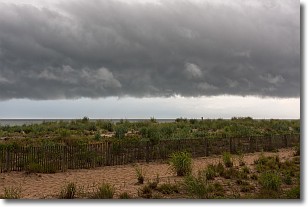Weather Alert in Michigan
Air Quality Alert issued July 12 at 10:13AM EDT by NWS Detroit/Pontiac MI
AREAS AFFECTED: Midland; Bay; Huron; Saginaw; Tuscola; Sanilac; Shiawassee; Genesee; Lapeer; St. Clair; Livingston; Oakland; Macomb; Washtenaw; Wayne; Lenawee; Monroe
DESCRIPTION: The Michigan Department of Environment, Great Lakes, and Energy (EGLE) has issued an Air Quality Alert for elevated levels of fine particulate (PM2.5) Sunday until noon Monday. Pollutants across the state are expected to reach the Very Unhealthy (Purple) to Unhealthy (Red AQI) range in northern locations, with ranges of Unhealthy to USG (Orange AQI) further south. The Air Quality Alert Sunday into Monday is statewide. Wildfire smoke from Canada will push into Michigan from Saturday to Monday. Increased fine particulate levels will reach the western portion of the Upper Peninsula on Saturday afternoon. The smoke will push east and south, expanding across the rest of the state as Sunday progresses. Highest concentrations will be seen in northern areas with periods of Very Unhealthy to Unhealthy possible. Central locations could see readings ranging from Unhealthy to USG, and southern locations can expect levels of fine particulate in the Moderate to USG range. It is recommended that, when possible, you avoid strenuous outdoor activities, especially those with heart disease and respiratory diseases like asthma. Monitor for symptoms such as wheezing, coughing, chest tightness, dizziness, or burning in nose, throat, and eyes. Reduce or eliminate activities that contribute to air pollution, such as: - outdoor burning - use of residential wood burning devices Tips for households: - Keep windows closed overnight to prevent smoke from getting indoors and, if possible, run central air conditioning with MERV-13 or higher rated filters. For up-to-date air quality data for Michigan visit the MiAir site: https://air-egle.hub.arcgis.com/ For up-to-date air quality data nationally visit EPAs Air Now site: https://www.airnow.gov/ For further health information, please see MDHHS Wildfire Smoke and Your Health site: https://www.michigan.gov/mdhhs/safety-injury-prev/environmental- health/your-health-and-wildfire-smoke
INSTRUCTION: N/A
Want more detail? Get the Complete 7 Day and Night Detailed Forecast!
Current U.S. National Radar--Current
The Current National Weather Radar is shown below with a UTC Time (subtract 5 hours from UTC to get Eastern Time).

National Weather Forecast--Current
The Current National Weather Forecast and National Weather Map are shown below.

National Weather Forecast for Tomorrow
Tomorrow National Weather Forecast and Tomorrow National Weather Map are show below.

North America Water Vapor (Moisture)
This map shows recent moisture content over North America. Bright and colored areas show high moisture (ie, clouds); brown indicates very little moisture present; black indicates no moisture.

Weather Topic: What are Shelf Clouds?
Home - Education - Cloud Types - Shelf Clouds
 Next Topic: Sleet
Next Topic: Sleet
A shelf cloud is similar to a wall cloud, but forms at the front
of a storm cloud, instead of at the rear, where wall clouds form.
A shelf cloud is caused by a series of events set into motion by the advancing
storm; first, cool air settles along the ground where precipitation has just fallen.
As the cool air is brought in, the warmer air is displaced, and rises above it,
because it is less dense. When the warmer air reaches the bottom of the storm cloud,
it begins to cool again, and the resulting condensation is a visible shelf cloud.
Next Topic: Sleet
Weather Topic: What is Snow?
Home - Education - Precipitation - Snow
 Next Topic: Stratocumulus Clouds
Next Topic: Stratocumulus Clouds
Snow is precipitation taking the form of ice crystals. Each ice crystal, or snowflake,
has unique characteristics, but all of them grow in a hexagonal structure.
Snowfall can last for sustained periods of time and result in significant buildup
of snow on the ground.
On the earth's surface, snow starts out light and powdery, but as it begins to melt
it tends to become more granular, producing small bits of ice which have the consistency of
sand. After several cycles of melting and freezing, snow can become very dense
and ice-like, commonly known as snow pack.
Next Topic: Stratocumulus Clouds
Current conditions powered by WeatherAPI.com




